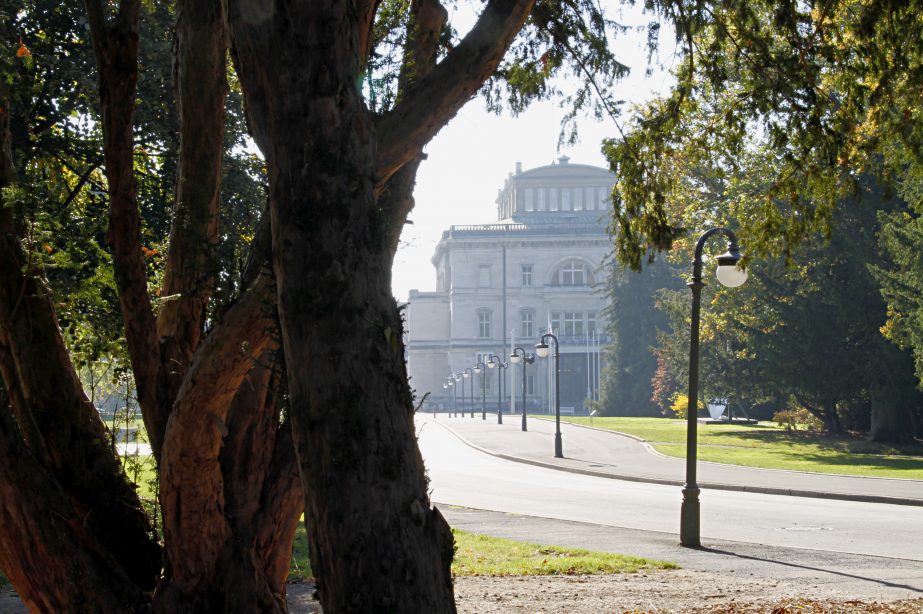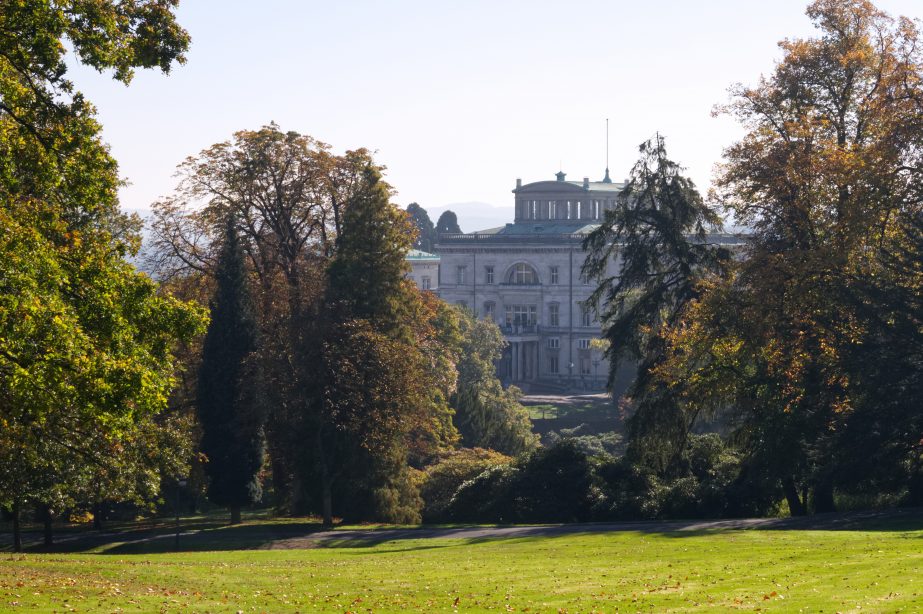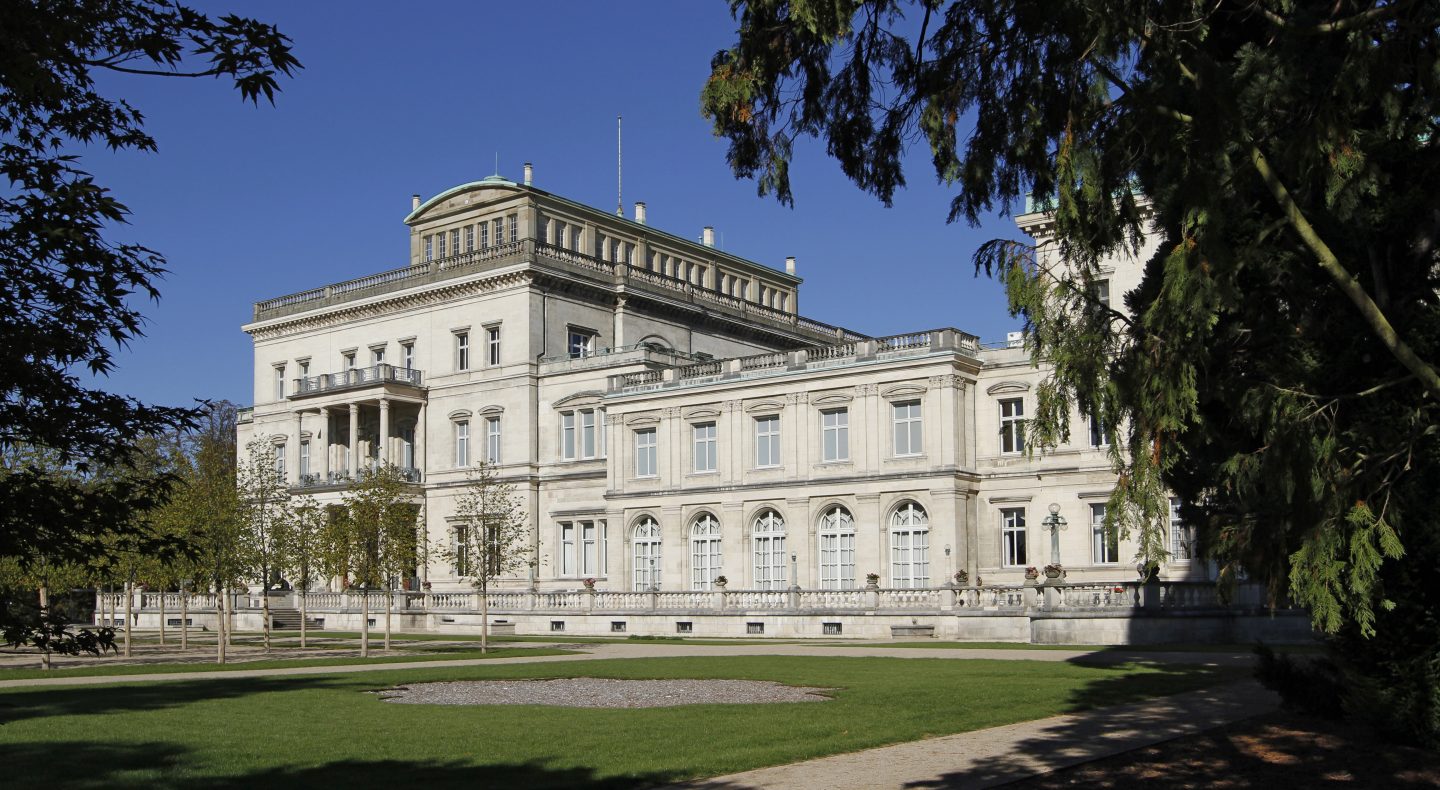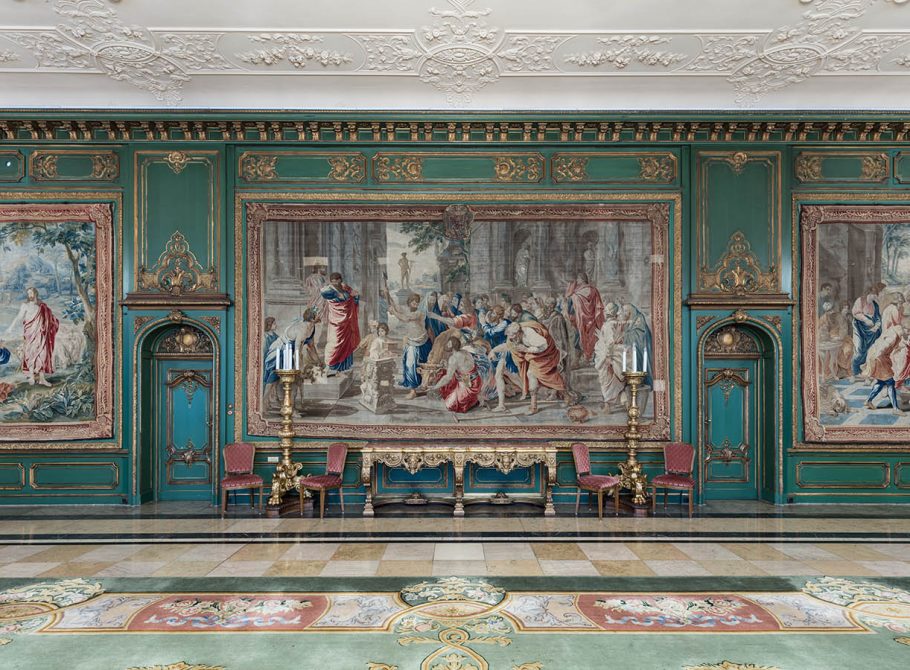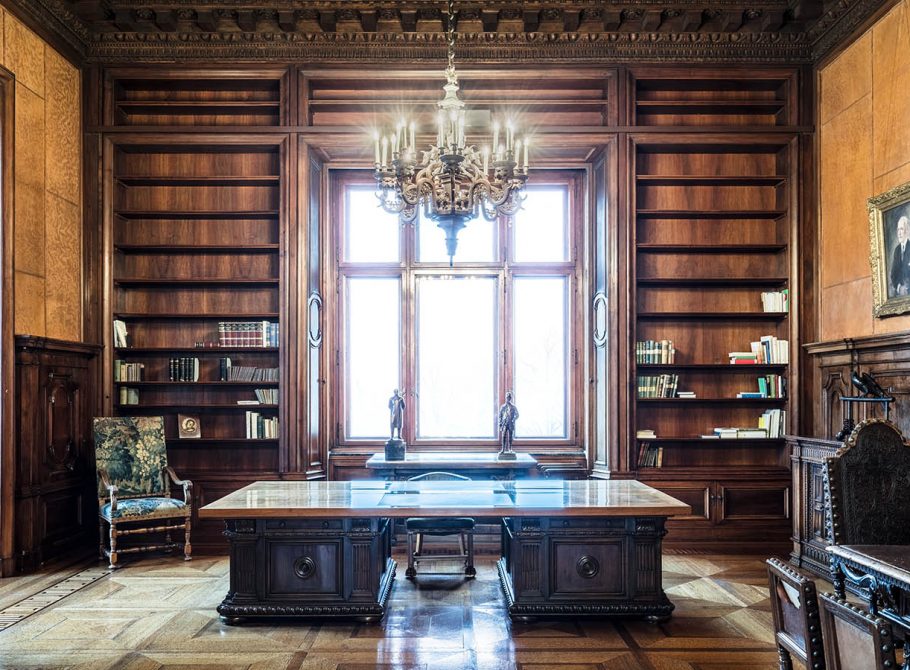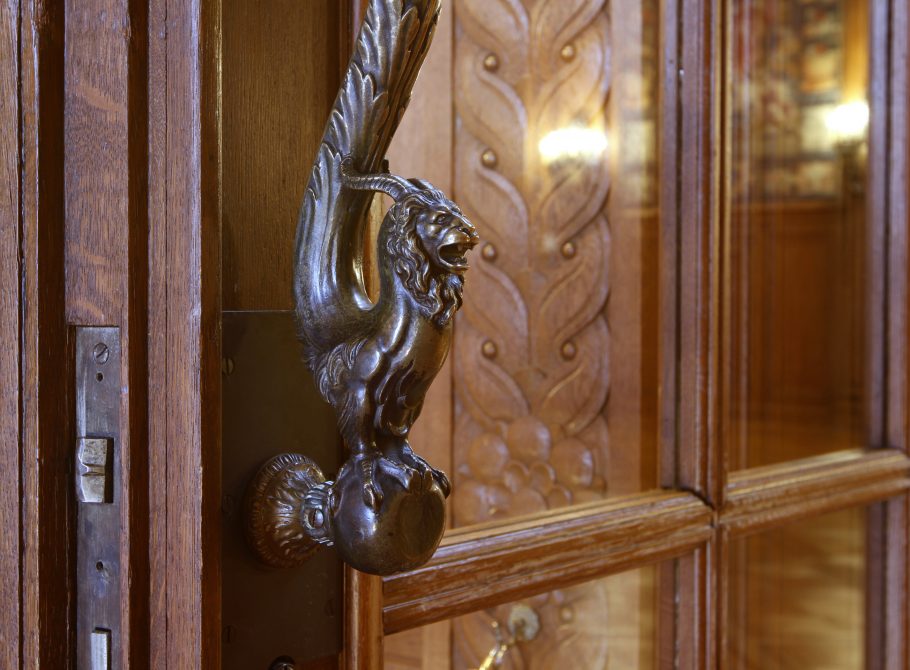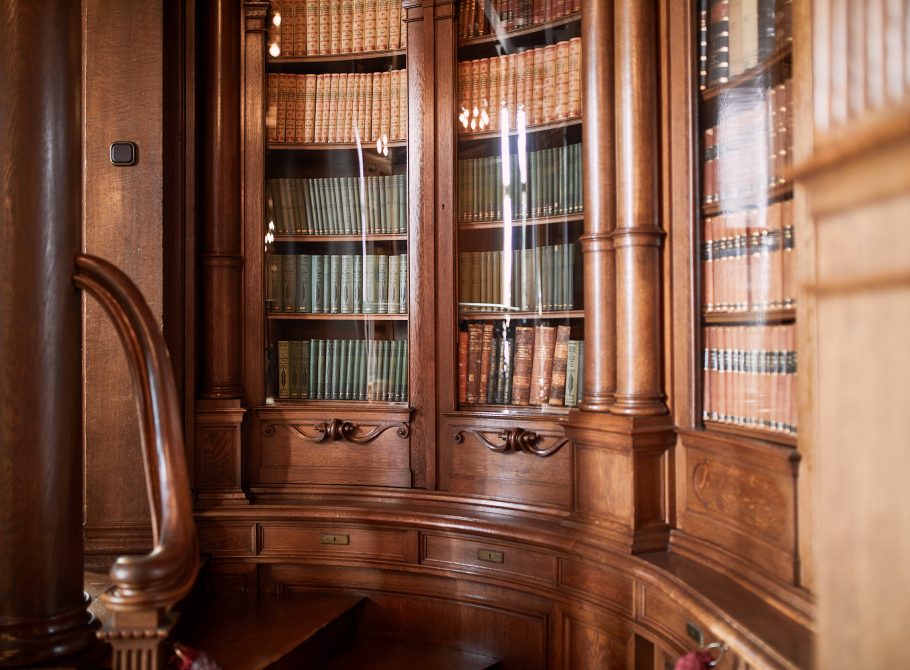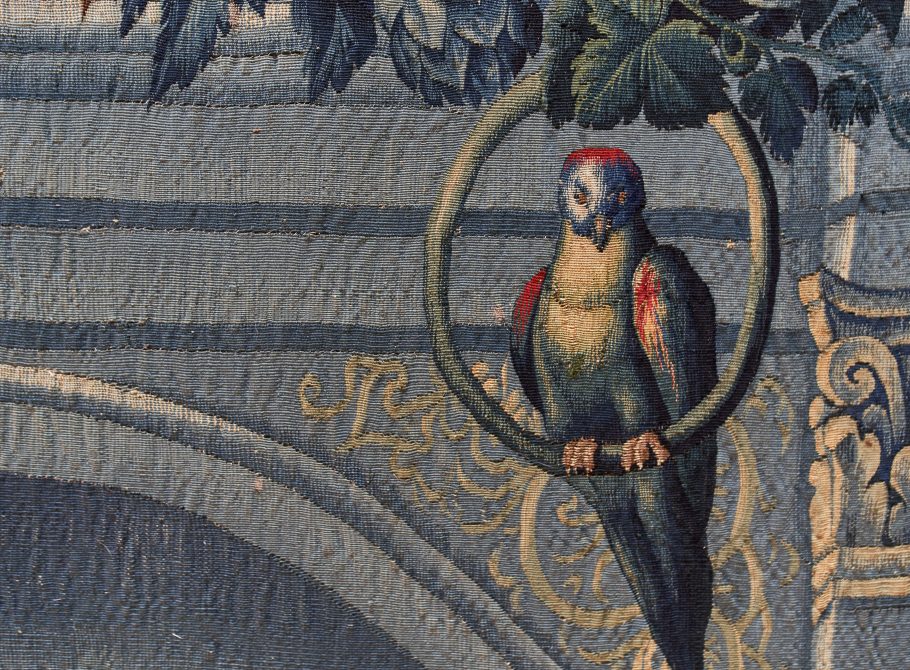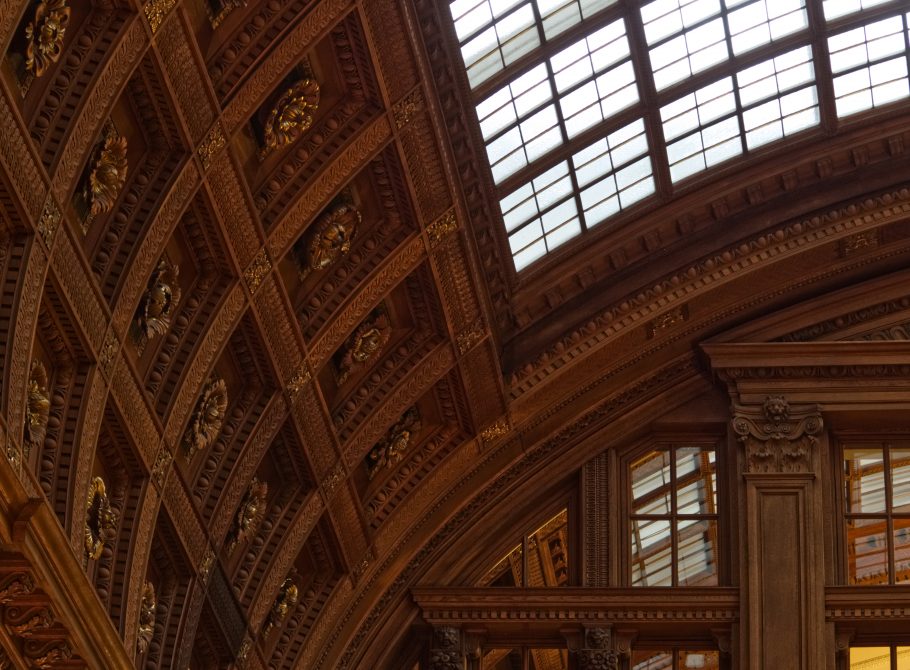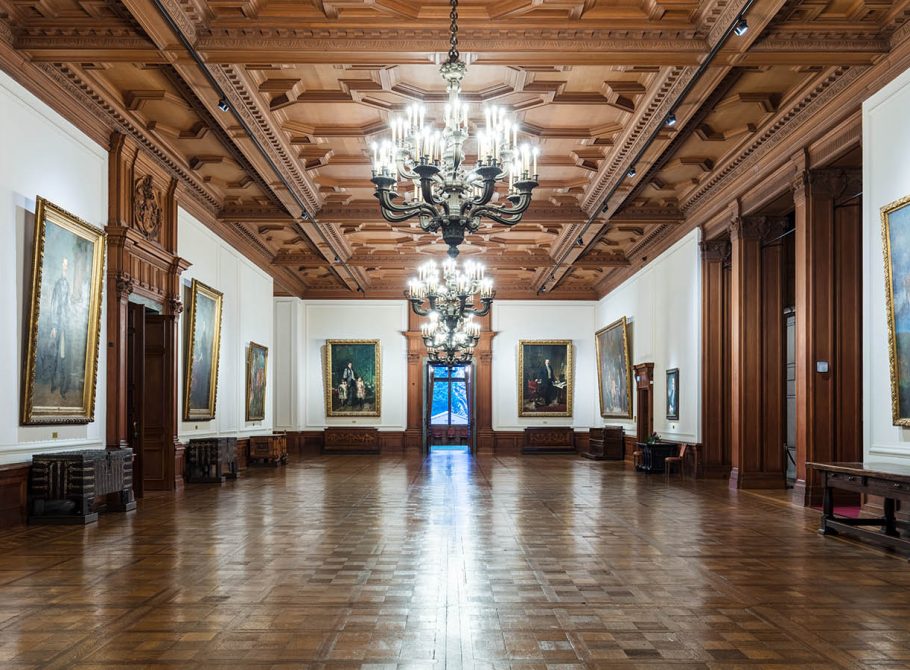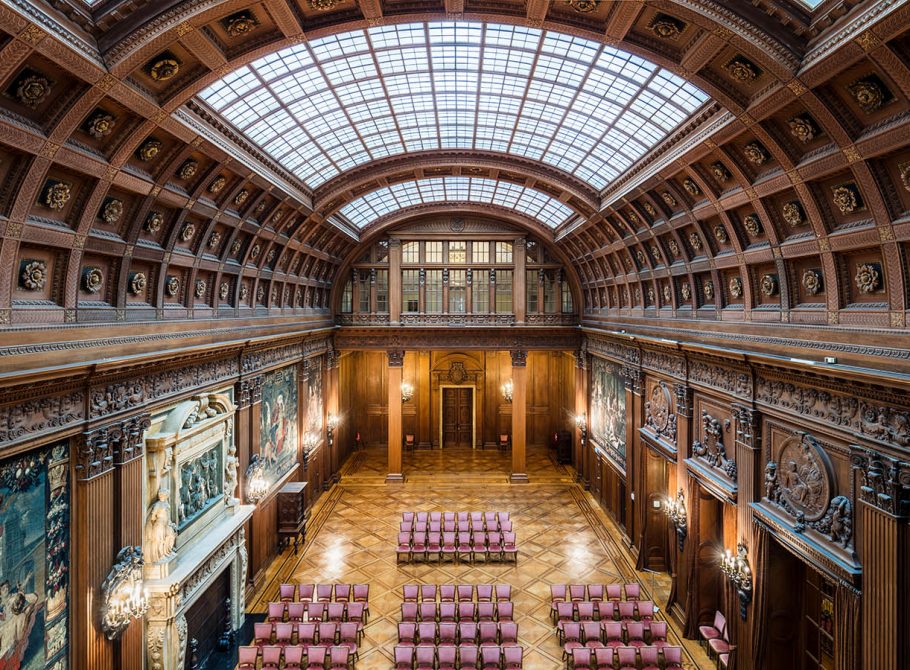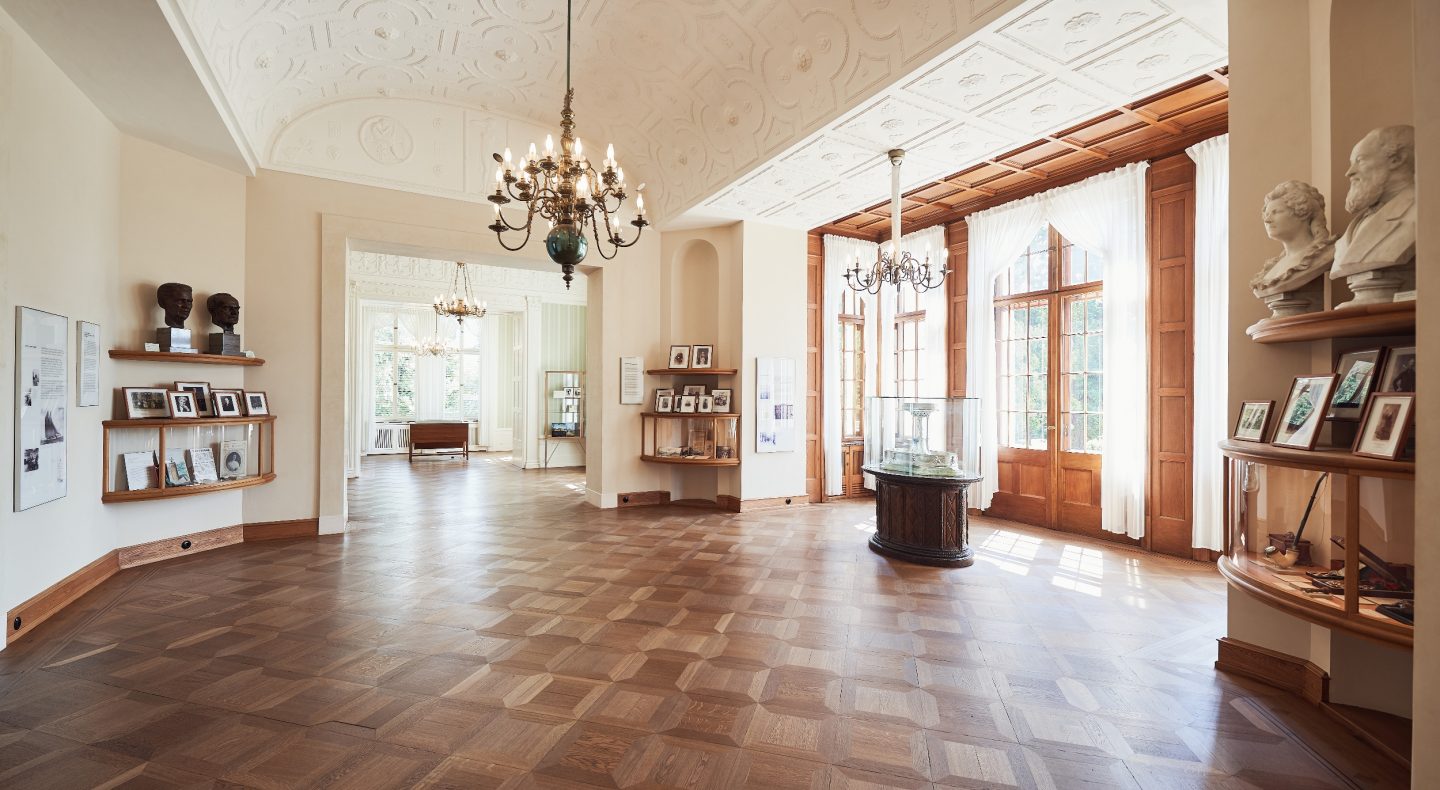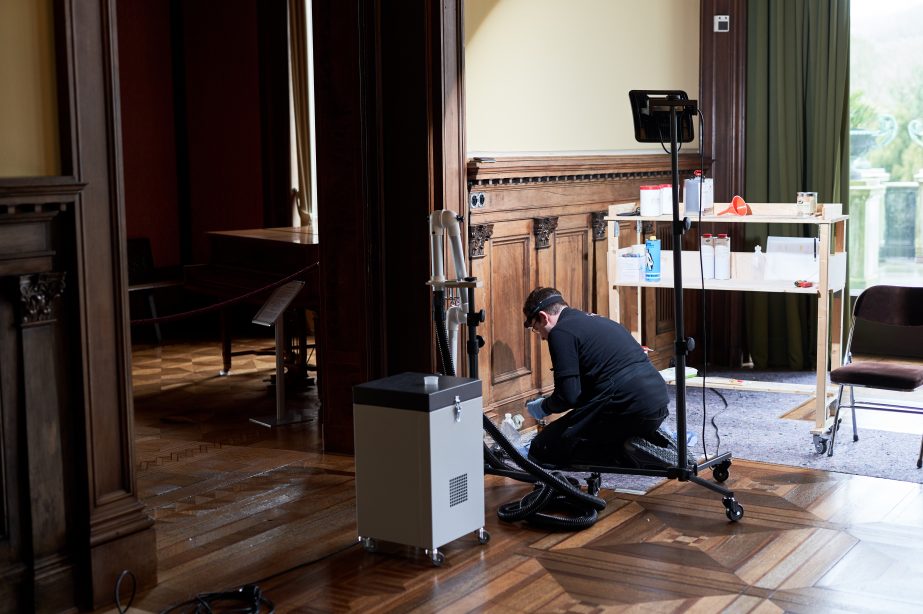The Villa Hügel
Krupp. The name and tradition of this firm, its owners and the family are inextricably linked with the Villa Hügel. More than that, the location epitomises the lifestyle of the haute bourgeoisie and with it an epoch of German history. For the Alfried Krupp von Bohlen und Halbach-Stiftung, it is a special responsibility to preserve the Villa Hügel and its surrounding park for present and future generations.
The Villa Hügel is divided into two wings. The main building – called the Main House – served as the residence for the Krupp family and is connected via a linking tract to the Guest House, which now houses the Krupp Historical Exhibition.
The 399-room residence: An analysis of the old plans shows that, with its two buildings, connecting tract, basement and attic, the Villa Hügel contains 399 rooms, comprising 11,100 square metres. Of these rooms, 103 accommodate the main living quarters, totalling 4,500 square metres.
